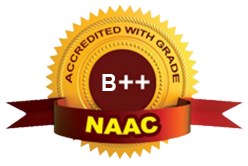
Designation: Assistant Professor (AC)
School : School of Sciences, Botany
Qualification: Ph.D. (Botany)
Phone : +91- 9456322128
Email : [email protected]
Dr. Kirtika Padalia is working as an Assistant Professor (AC) in the Department of Botany, School of Sciences at Uttarakhand Open University, Haldwani since August 2019 to till date. She did her M.Sc. in Botany from the Department of Botany, M. B. Govt. PG College, Haldwani and Ph.D. in Botany (Ecology) from D.S.B. Campus, Kumaun University, Nainital.
Dr. Padalia has published a number of research papers in various reputed International and National journals. She has attended and presented her research work in several International/ National conferences/ seminars/ workshops.
Dr. Padalia is currently working on soil microbial biomass in artificial ecosystems (agro-forestry systems) as well as the natural ecosystem (natural forest) in the Central Himalayan region and has published some worthy research publications in this area of research. She has software skills in SPSS, PAST, Microsoft-Office, Microsoft Excel etc. She has an expertise in forest ecology, agroforestry and soil management.
- Specialization: Ecology (in Ph.D.), Plant pathology (in M.Sc.)
- Research Area: Soil and its management, Microbial biomass, Forest ecology, Agroforestry, Ethnobotany & Ethnomedicine, Biodiversity & conservation
- Teaching Area: Ecology, Plant Pathology, Lower Botany, Applied Botany, Environmental biology
Fellowships:
- Junior Research Fellow (during 2014 & 2015): Basic Scientific Research (BSR) University Grants Commission (UGC).
- Senior Research Fellow (during 2016 & 2017): Basic Scientific Research (BSR) University Grants Commission (UGC).
Research and Publications
Citations : 292
h-index : 6
i10-index : 6
Total Impact Factor* : 22.526 (*Thomson Reuters IF)
NAAS score : 87.70 (NAAS 2022)
(Source: Google Scholar: https://scholar.google.com/citations?hl=en&user=5GyWjsQAAAAJ till date August 24, 2022; NAAS score http://naas.org.in/NJS/journals2022.pdf)
(A): Research paper: 15
- Manral V, Bargali K, Bargali SS, Jhariya MK, Padalia K (2022) Relationships between soil and microbial biomass properties and annual flux of nutrients in Central Himalaya forests, India. Land Degradation and Development, https://doi.org/10.1002/ldr.4283 (Published by Wiley, Thomson Reuters I.F= 4.377, NAAS score= 10.98).
- Padalia K, Bargali SS, Bargali K, Manral V (2021) Soil microbial biomass phosphorus under different land use systems of Central Himalaya. Tropical Ecology, https://doi.org/10.1007/s42965-021-00184-z (Published by Springer, Thomson Reuters I.F= 1.333, NAAS score= 7.39).
- Bisht V, Padalia K, Bargali SS, Bargali K (2021) Structure and energy efficiency of agroforestry systems practiced by tribal community in Central Himalayas. Vegetos, 34: 368-382. (Published by Springer, NAAS score= 5.27)
- Padalia K (2020) Tej Paat Chai: A traditional folk drink of tribal community of Central Himalaya. ENVIS Bulletin Himalayan Ecology, 28:64-66. (Published by G.B. Pant National Institute of Himalayan Environment).
- Bargali SS, Padalia K, Bargali K (2019) Effects of tree fostering on soil health and microbial biomass under different land use systems in Central Himalaya. Land Degradation and Development. doi:10.1002/ldr.3394 (Published by Wiley, Thomson Reuters I.F= 7.265, NAAS score= 10.98).
- Padalia K, Bargali SS, Bargali K and Khulbe K (2018) Microbial biomass carbon and nitrogen in relation to cropping systems in Central Himalaya, India. Current Science, 115(9): 1741-1750. (Published by Indian Academy of Sciences, Thomson Reuters I.F=1.169, NAAS score= 7.10).
- Padalia K, Bargali SS, Bargali K and Parihaar RS (2018) Socio-economic Analysis Based on Energy Input and Output of Mixed Cropping Systems of Bhabhar Region (Shiwalik Range of Kumaun Himalaya, India). Current Agriculture Research Journal, 6(2):123 -140 (Published by Enviro Research Publishers, NAAS score= 4.36)
- Bargali K, Manral V, Padalia K, Bargali SS and Upadhyay VP (2018) Effect of vegetation type and season on microbial biomass carbon in Central Himalayan forest soils, India. Catena, 171:125 -135. (Published by Elsevier, Thomson Reuters I.F=6.367, NAAS score= 11.20).
- Manral V, Padalia K and Karki H (2018) Plant diversity and regeneration potential of three different forests of Central Himalaya. Current World Environment, 13(1):113-123. (Published by Enviro Research Publishers, NAAS score= 5.37)
- Padalia K, Bargali K and Bargali SS (2017) Present scenario of agriculture and its allied occupation in a typical hill village of Kumaun Himalaya, India. Indian Journal of Agricultural Sciences, 87(1):132 -141. (Published by Indian Council of Agricultural Research (ICAR); Thomson Reuters I.F=0.371, NAAS score= 6.37).
- Padalia K, Bargali K, Bargali SS (2015) How does traditional home-gardens support ethnomedicinal values in Kumaun Himalayan Bhabhar belt, India? African Journal of Traditional, Complementary and Alternative Medicines, 12(6): 100-112. (Published by African Networks on Ethnomedicines; Thomson Reuters I.F=0.553, NAAS score= 6.550)
- Padalia K (2015) Gewai saag: A folk medicine used by the tribal people of Central Himalayan region. Indian Journal of Traditional Knowledge, 14(1):144 ̶146. (Published by National Institute of Science Communication and Information Resources (NISCAIR, CSIR); Thomson Reuters I.F=1.091, NAAS score= 6.76).
- Padalia K, Parihaar RS, Bhakuni N, Kapkoti B (2015) Leaf litter decomposition of two Central Himalayan Oaks. Current World Environment, 10(2): 509-516. (Published by Enviro Research Publishers, NAAS score= 5.37)
- Padalia K, Parihaar, RS, Bargali SS, Bargali K (2013) The virtual curry leaves: An attractive pharmacological and ethnobotnical prized plant. Oaks, 9: 16-19.
- Bargali SS, Yadav S, Padalia K (2012) Forest Fire: A thread to biodiversity conservation. Oaks, 8:75-86.
(B) Chapters in Self Learning Material (SLM): 06
- Prokaryotic and Eukaryotic plant cell in M.Sc. II semester (MSCBOT-506) for Uttarakhand Open University, Haldwani.
- Wood development and nodal anatomy in M.Sc. II semester (MSCBOT-508) for Uttarakhand Open University, Haldwani.
- Ecosystem structure and functioning in M.Sc. III semester (MSCBOT-602) for Uttarakhand Open University, Haldwani.
- Ecosystem development and ecosystems of the world in M.Sc. III semester (MSCBOT-602) for Uttarakhand Open University, Haldwani.
- Global Environmental Problems and Conservation Strategies in M.Sc. III semester (MSCBOT-602) for Uttarakhand Open University, Haldwani.
- Management ecosystems for sustainable living in M.Sc. III semester (MSCBOT-602) for Uttarakhand Open University, Haldwani.
(C) Lecture notes: 12
- Unit 1–5: Block 1: Viruses. Biology and diversity of viruses, bacteria and fungi (Paper Code: BOT-501):
- Unit–6: General Account and Classification of Eubacteria, Archaebacteria and Cyanobacteria. Biology and diversity of viruses, bacteria and fungi (Paper Code: BOT- 501):
- Unit –7: Ultra Structure, Nutrition and Reproduction of Bacteria. biology and diversity of viruses, bacteria and fungi (Paper Code: BOT-501):
- Unit –8: Economic Importance of Bacteria. biology and diversity of viruses, bacteria and fungi (Paper Code: BOT-501):
- Unit –9: Mycoplasma. biology and diversity of viruses, bacteria and fungi (Paper Code: BOT-501):
- Unit–10: General Characters and Classification of Fungi. Biology and diversity of viruses, bacteria and fungi. (Paper Code: BOT-501) https://www.uou.ac.in/lecturenotes/science/MSCBOT-17/Unit%20%e2%80%9310%e2%80%93%20General%20Characters%20and%20Classification%20of%20Fungi%20by%20Dr.%20Kirtika%20Padalia-converted.pdf
- Unit–11: Ultra Structure of Cell and Cell Wall Composition. Viruses. Biology and diversity of viruses, bacteria and fungi (Paper Code: BOT-501):
- Unit –12: Nutrition in Fungi. Viruses. Biology and diversity of viruses, bacteria and fungi (Paper Code: BOT-501)
- Unit –13: Reproduction in Fungi. Viruses. Biology and diversity of viruses, bacteria and fungi (Paper Code: BOT-501)
- Unit–14: Heterothallism, Heterokaryosis and Parasexuality. Viruses. Biology and diversity of viruses, bacteria and fungi (Paper Code: BOT-501)
- Unit –15: Mastigomycotina and Zygomycotina. Viruses. Biology and diversity of viruses, bacteria and fungi (Paper Code: BOT-501)
- Unit –2: Ultrastructureand function of plant cell and organelles. Cell biology, genetics, biostatistics and ecology (Paper Code: BOT-551)
| Title | Language | Audio file |
|---|---|---|
| वैज्ञानिक जगदीश चन्द्र बोस को जानें डा. मुक्ता जोशी, डा. मिनाक्षी राणा व डा.कीर्तिका पडलिया के साथ | Hindi | |
| विश्व ओज़ोन दिवस - 2022 | Hindi | |
| Indian Women in Science | Hindi |
 Online Admission
Online Admission


